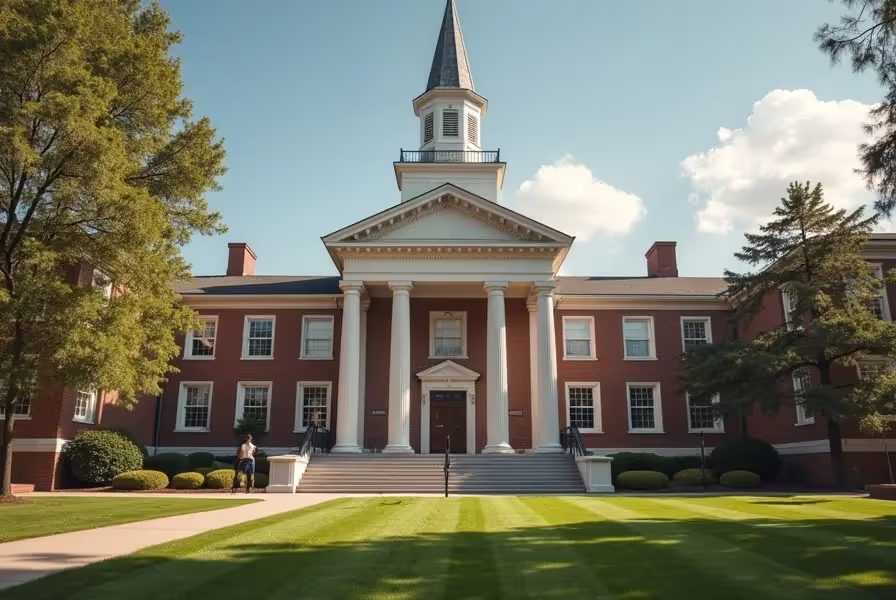Your Guide to Vermont's Cost of Living: Affordable Living in the Green Mountain State
Thinking of moving to Vermont? Maybe you’re considering Burlington, Montpelier, or a cozy small town surrounded by nature. No matter where you’re heading, understanding the cost of living in Vermont is key. Vermont is renowned for its scenery, safety, and tight-knit communities. But how much money do you really need to live well here? Let's break down the essential expenses and common costs for everyday life in Vermont.
Housing Costs in Vermont: What You Need to Know
Housing is often the biggest expense for anyone, whether you plan to rent or buy. Vermont offers a wide range of housing choices from downtown apartments to peaceful rural homes. Here's what you can expect:
- Median home price (2024): About $390,000 statewide. Expect higher prices in Burlington and ski towns, and lower in rural areas.
- Average rent for a 1-bedroom apartment: $1,200–$1,700 monthly in Burlington. Around $950–$1,200 in smaller cities and towns.
- Property taxes: State average is around 1.86%—one of the higher rates in the U.S. This varies by town.
Burlington and South Burlington have the highest rents in Vermont. Rural counties and smaller towns like Brattleboro or St. Johnsbury typically have more affordable options. Many residents find older farmhouses or split units to save on housing costs.
Utilities, Internet, and Monthly Essentials in Vermont
Don't forget about heating, especially given Vermont's long, cold winters. Utility costs are important to factor into your budget:
- Electricity, heating, water, garbage (monthly): $170–$250 for an average 2-bedroom apartment or home.
- Internet (basic package): $60–$90 per month. Rural broadband can be limited but is improving.
- Heating oil (winter): For homes relying on oil, expect to pay $300–$600 per month during the coldest parts of the year.
Energy bills are higher from November to March due to heating. If you’re moving into an older Vermont home, check for weatherization improvements or ask about average heating bills before signing a lease.
Grocery and Food Prices in Vermont
How much will you pay for groceries in Vermont? Food costs here are slightly above the national average, especially if you buy organic or local products, which are popular in Vermont.
- Monthly grocery bill (single person): $350–$500
- For a family of four: $900–$1,200 monthly
- Milk (gallon): $4.10
- Dozen eggs: $3.25
- Loaf of bread: $3.70
Farmers markets, co-ops, and local food stores are common in Vermont. You can save money by buying local produce during harvest season.
Transportation and Getting Around Vermont
Vermont is a rural state so most residents own a vehicle. Public transportation exists mainly in larger cities like Burlington or Montpelier. Here are typical transportation expenses:
- Gasoline: $3.65–$3.90 per gallon (2024)
- Car insurance: Average $900–$1,250 per year
- Public bus fare (one-way): $1.00–$1.50 in most cities
- Vehicle maintenance: Varies, but plan for winter tires and snow removal supplies
Road conditions can get tough in winter. Snow tires and regular car maintenance are important for safety and mobility.
Healthcare Expenses and Insurance in Vermont
Vermont is known for progressive healthcare policies, but premiums and costs can vary. Most residents obtain insurance through work, Vermont Health Connect, or federal programs.
- Average health insurance premium: $570 per month for an individual, before subsidies (2024)
- Doctor visit copay: $20–$40
- Dental checkup: $90–$175
If you qualify for Vermont's expanded Medicaid or employer-based plans, your actual costs may be much lower. Always compare plans during open enrollment for savings.
Childcare, Schools, and Educational Costs in Vermont
Getting the best education for your children is important. Here’s what Vermont families may pay:
- Average childcare (full-time, infant): $1,250–$1,850 per month
- Public schools: Tuition-free, but towns with high quality schools may have higher property taxes
- Private school tuition: $9,000–$18,000 per year
- College tuition (UVM in-state): Around $17,600 per year (2024)
There are several financial aid resources and scholarships for Vermont residents.
Taxes, Fees, and Other Expenses to Expect in Vermont
When calculating cost of living, Vermont's taxes play a big role:
- Income tax: Progressive rate, 3.35% to 8.75% based on income
- Sales tax: 6%, plus local option taxes in some towns
- Vehicle registration: $76–$151 annually
Vermont offers some tax credits, property tax relief for residents, and other benefits to keep your total burden manageable. Check if you qualify for earned income tax credit or homestead exemptions as a homeowner.
Section: Cost of Living in Different Parts of Vermont
Urban, suburban, and rural Vermont offer distinct lifestyle and price points. Some typical examples:
- Burlington: Highest rents and fastest-growing job market; higher overall cost, but more amenities
- Montpelier: Quaint, with modest rent and good schools; excellent for those seeking small-city charm
- Rutland/Southern Vermont: Affordable homes and rent; great for families wanting space and value
- Northeast Kingdom: Most affordable; perfect for outdoor lovers and those seeking peace and quiet
Living costs will change based on your choice of community, lifestyle, and housing needs. Always research local job markets, schools, and real estate before you decide.
Frequently Asked Questions About Vermont Living Costs
Is Vermont an expensive state to live in?
Vermont's overall cost of living is slightly above the U.S. average. Housing, energy, and food cost more than some neighboring states, but Vermont offers high quality of life, safety, and excellent schools.
What salary do you need to live comfortably in Vermont?
A single person should aim for $40,000–$50,000 per year pre-tax. Families with children often need $90,000–$110,000 annually to live comfortably, depending on location and lifestyle.
How much does it cost to rent an apartment in Burlington, VT?
Monthly rent for a 1-bedroom apartment in Burlington averages $1,200–$1,700. Larger apartments or prime locations cost more.
Are groceries more expensive in Vermont?
Yes, groceries cost about 5–10% more than the national average due to Vermont's rural location and emphasis on local products. Shopping at farmers markets or local co-ops can help stretch your budget.
Does Vermont have high property taxes?
Compared to national averages, Vermont's property taxes are among the highest in the country. However, the state provides exemptions and credits for some homeowners to reduce the burden.
Popular Search Queries About Vermont Cost of Living
- How much money do you need to live in Vermont?
- Is it cheaper to live in Vermont or New Hampshire?
- What is the average utility bill in Vermont?
- Cost of food and groceries in Vermont
- Best towns in Vermont for affordable living
- Average rent and home prices in Vermont cities
- Vermont vs. neighboring states cost comparison
Understanding the real cost of living in Vermont helps you make the right choice for your lifestyle and budget. With planning, you can enjoy all the scenic beauty, friendly neighborhoods, and four-season fun Vermont has to offer, all while knowing what you’re likely to spend each month.











.svg)



